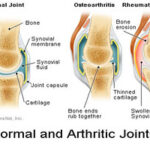Feline Bone Cancer is the most common form of cancer in cats. Osteosarcoma is the most common form of feline bone cancer. At first, the symptoms of the cancer appear to the symptoms of arthritis. Because the cancer primarily affects cats that are 10 years or older, the signs of cancer may appear to just be the pains of old age. The cat may act stiff, limp around and be in serious pain. Usually once these symptoms are present the cancer has advanced. The cancer usually attacks the long bones of the cat, such as the legs and spine. The American Veterinary Medical Association produces a pamphlet that discusses cancer in animals. The pamphlet gives 10 signs that your pet may possibly have cancer. The signs are: Ten Common Signs of Cancer in Small Animals
1. Abnormal swellings that persist or continue to grow.
2. Sores that do not heal.
3. Weight loss.
4. Loss of appetite.
5. Bleeding or discharge from any body opening.
6. Offensive odor.
7. Difficulty eating or swallowing.
8. Hesitation to exercise or loss of stamina.
9. Persistent lameness or stiffness.
10. Difficulty breathing, urinating, or defecating.
Diagnosis- Once a cat is suspected of having bone cancer; a veterinarian will take a series of x-rays. The x-rays will help to locate the location of the cat’s tumor. Once located, a biopsy will be performed on the effected bone to test for cancer.
Treatment- The effected limb may have to be amputated depending on how much bone is affected by the cancer. Sometimes amputation is enough to rid the cat of cancer and sometimes chemotherapy is needed to eradicate the cancer.
Chemotherapy- The website Catscancer.com gives in-depth information on treating cats with chemo. The site describes the treatment. “The drugs are often given by injection. They are often very toxic, and can cause severe damage to the tissue around the injection site if there is any leakage. Your veterinarian will therefore use a catheter in the vein to give the medication. Cats don’t seem to be as adversely affected by chemotherapy as people are. Their hair doesn’t usually fall out, although they can lose their whiskers. They may show signs of gastro intestinal upset, such as vomiting and diarrhea, and they may not eat after treatment.”
Cost of Treatment: A cat is a loved member of the family but cost of treatment is often a major consideration when deciding what treatment a cat will receive. Be sure to have a frank and honest conversation with your veterinarian about much you will be able to spend on your cat’s treatment. As emotional as this decision will be, you need to make a logical decision about the financial costs involved.
Survival- As with any form of cancer, early detection often gives the cancer patient the better odds of survival. With proper care and monitoring of any changes in your cat, you should be able to identify the signs of bone cancer.
http://www.avma.org/animal_health/brochures/cancer/cancer_brochure.pdf
http://www.catscancer.com/cat-chemotherapy/.html
http://www.cat-health-guide.org/feline-bone-cancer.html



